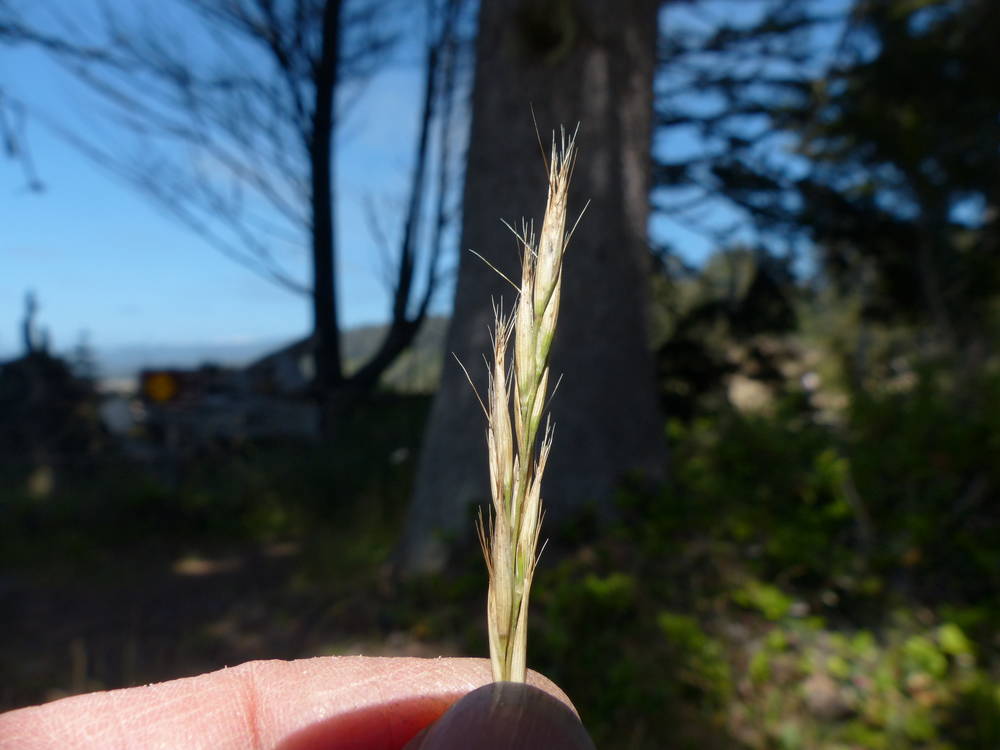
Plants 30–90 cm tall; cespitose to spreading on short rhizomes.
Leaves sheaths hairy or glabrous, the top with tufts of hairs 1–3.5 mm; blades rolled, folded or flat, to 30 cm × up to 5 mm, glabrous or pubescent; uppermost culm leaf usually not reaching the inflorescence.
Inflorescences panicles or racemes, 4–10 cm.
Spikelets 9–15(18)mm, 5–10 florets.
Glumes lanceolate, 8–14(17.5)mm; lower glumes (5)7–9(11)-veined; upper glumes 5–7(9)-veined.
Calluses 0.5–1.2 mm with a tuft of hairs on each side, hairs approximately 1.5 mm.
Lemmas (7)9–16 mm, the bodies 2–4 mm with awn-like apical lobes 5–13 mm, thick and leathery, with 2 rows of tufts of hairs, lower row continuous or with weak central tufts, upper row composed of 2 marginal tufts, occasionally with 2 additional tufts with few hairs between the marginal tufts, hairs of upper row not or only just exceeding the base of the awn; lemma awns usually bent and twisted, (7)9–16 mm.
Anthers 0.4–2.5 mm.
Caryopses 1.8–3 × 0.8–1.6 mm.
2n=24.
Grasslands and disturbed sites, especially dry, nutrient-depleted sites, mainly near the coast. 100–500m. CR, Est. CA; Australia, New Zealand. Exotic.
Unlike R. biannulare, R. penicillatum has flag leaves that usually do not reach the inflorescences and only two tufts of hairs halfway between the lemma base and tip (both tufts located on the lemma margins). Rytidosperma penicillatum has a strong superficial resemblance to Danthonia spicata which has hairs along the lemma margins, not arranged in tufts.